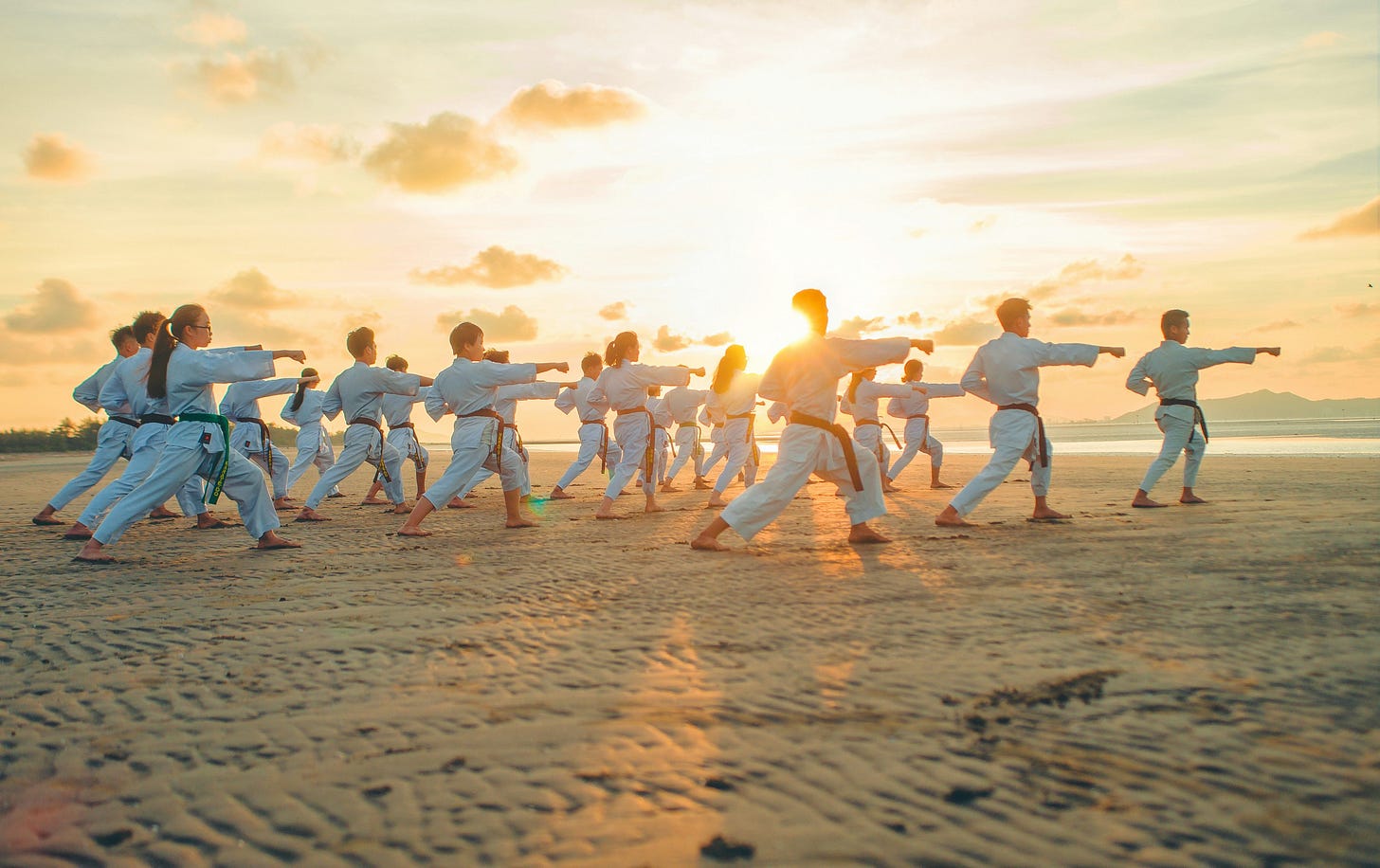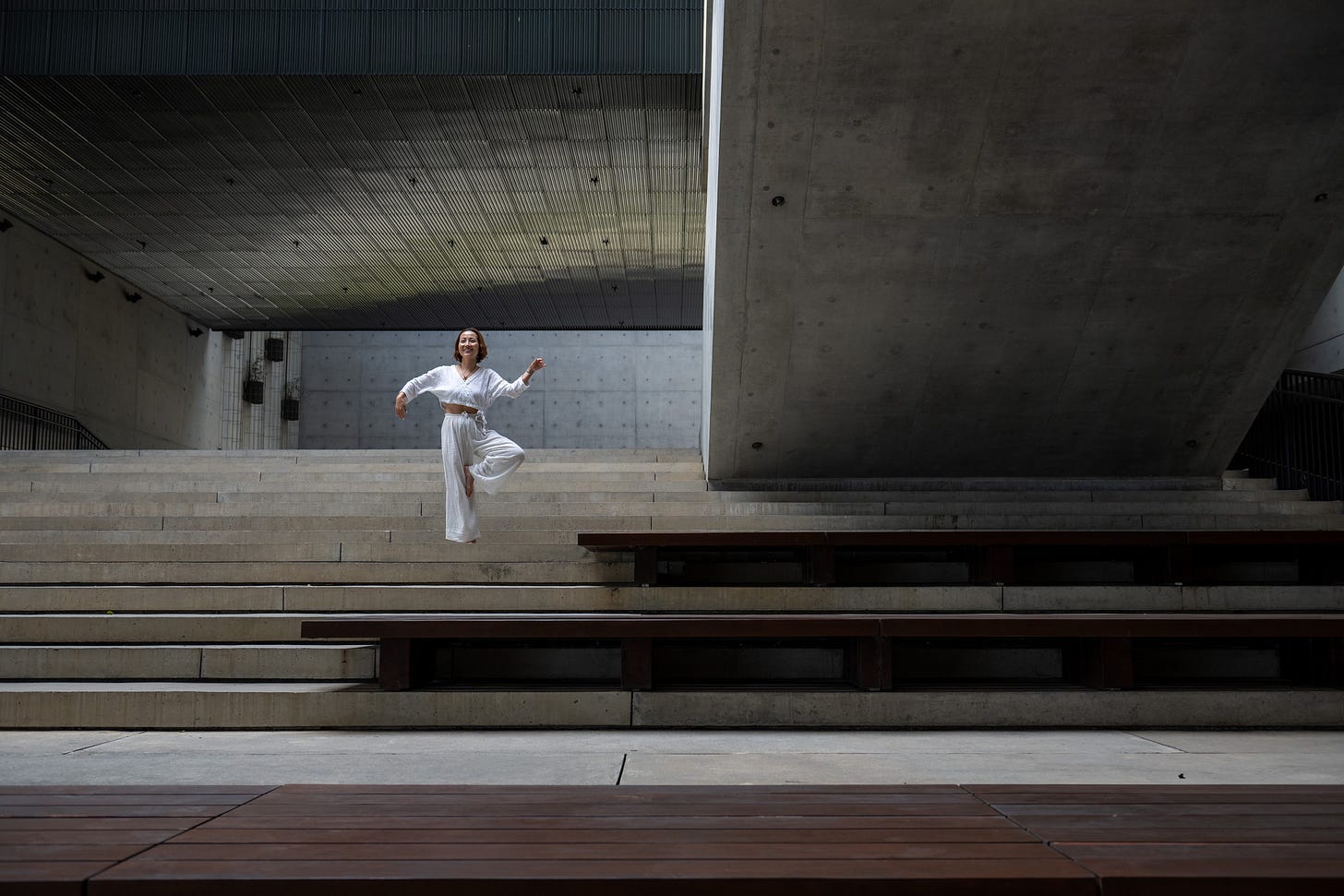The Path of Least Resistance
I wish I could have learned faster, but wisdom requires time and patience.
My hometown in mainland China is only a three-hour drive from the renowned Shaolin Temple — the birthplace of Shaolin kung fu, and a four-hour drive from Wu Dang Temple, which is celebrated for its Tai Chi and Daoism practices. It is steeped in rich cultural heritage.
However, Kung fu and martial arts were not a significant part of my childhood. Unlike the Western fascination with kung fu, spurred by icons like Bruce Lee and Jackie Chan, Chinese parents are generally reluctant to allow their precious offspring to engage in strenuous activities like kung fu training. Throughout the five-thousand-year history of China, securing a government position has always been regarded as the highest ambition—still so by my parents.
My personal choice led me on a different path. Driven by my independent nature, I chose the vocation in finance and business, moved to Australia, and consciously distanced myself from my traditional Chinese upbringing to adopt a more modern lifestyle—whatever that may mean.
As I grew older, I began to appreciate my Chinese roots. There is a wisdom that resonates with an ancient civilisation, yet it can be difficult for a younger nation to fully comprehend.
Wisdom requires necessary sufferings, and time to arise, distill and mature.
I moved to Hong Kong to immerse myself in Chinese culture. Ironically, I learned about the art of tea from a Russian and practiced martial arts with an American. It seems that a foreign identity can often grasp the essence of a culture more quickly, free from historical distortions and biases.
I was drawn to Qigong and inner martial arts, both of which emphasize the cultivation of inner harmony rather than an external focus on building stronger muscles or achieving faster movements.
And through this journey, I started to understand the wisdom of non-doing (Wu Wei 無為 in Chinese).
Non-doing is considered the foundational principle of Chinese Taoism. Interestingly, sometimes Wikipedia can provide more accurate information than even top research papers.
According to Wikipedia,
Wu Wei is a polysemous, ancient Chinese concept that embodies the ideal practice of “effortless action.” This state reflects personal harmony and allows for spontaneous, creative manifestation.
Wu Wei appears as early as the Spring and Autumn period (c. 770 – c. 481 BCE), with early literary examples found in the Classic of Poetry. It also became an important concept in the Confucian Analects, connecting a Confucian ethic of practical morality to a harmonious state of being where intention and action align. Furthermore, it became a central idea in Daoism, emphasizing alignment with the natural Dao in both actions and intentions, while avoiding force or haste against the natural order.
It seems human nature often leads us to interpret simple concepts in overly complex ways, sometimes attaching an “ism” label to grandly seperate one from the other.
Non-doing means following nature’s path of least resistance.
This principle applies both when you cut a tree or slice a piece of meat; you follow the natural structure of the material.
The same is true of Qigong, which has often been mystified by both Chinese and Western perspectives. This is particularly evident with the catchphrase from Star Wars: "May the force be with you."
As I delved deeper into Qigong, I realized that it is fundamentally about natural movement. It involves moving your body in ways that promote harmony while remaining relaxed, centered, and alert. There is no need for complex techniques or strenuous exercises.
The origins of this practice can be traced back to the simple fields of ancient China. Slow-paced farmers, deeply attuned to the rhythms of nature, observed how life was nurtured in plants and animals, and by entrainment, they mimicked those principles. Like many other practices, Qigong has evolved over the centuries, adapting to changing times and cultures. It has been known by various names, but the term 'Qigong' only gained widespread use in the twentieth century. This evolution reflects the adaptability and resilience of Qigong.
Both ancient cultures in the East and West shared a belief in the harmony and order of the universe. By focusing on following the natural tendencies of our bodies rather than forcing them into specific shapes, Qigong aligns us with the natural order of the world, reducing resistance and maximizing the benefits of our exercises.
The longevity of Okinawans living in the Blue Zone region serves as evidence of this. Regular, low-intensity movements are essential to their routines. Many Okinawans practice martial arts, particularly a dance-inspired version of tai chi. Activities such as gardening, walking, and other natural exercises contribute to their mobility and overall health.
Dear readers, if you find yourself trying too hard, pushing forward, and feeling frustrated, consider taking a daily walk in the park, trimming your plants in the garden, or exploring guided qigong practice with me, sleeping like a baby each night.
I aim at helping 1 million people sleep better.
As spring arrives, let’s follow nature’s lead, embrace the path of least resistance, and invite more harmony and beauty into our lives.
Have an epic week 🩷💚💛
Fang









Beautiful reflection on the wisdom of non-doing. It’s fascinating how true mastery often lies in simplicity—moving with nature rather than against it. A timely reminder to embrace ease and flow. 🌿